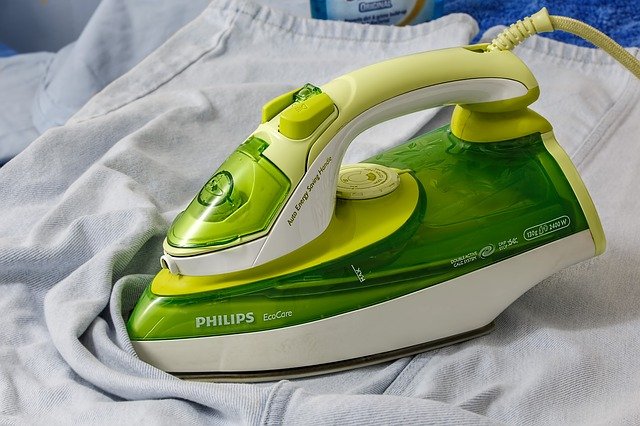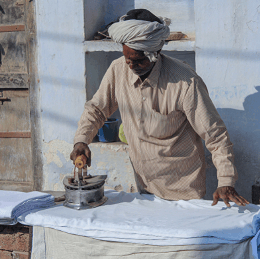Professional Ironing Tips You Need To Know
Ironing may seem like a mundane task, but it can have a significant impact on your appearance. Clothes that are wrinkled and not properly pressed give the impression of disorganization and lack of professionalism. This blog post will provide you with professional ironing tips to ensure that your clothes always look their best!
The tone for this blog post is professional because it provides readers with useful information about how they can keep their clothes looking nice as well as maintaining their professionalism at work or in public. The following are Professional ironing tips you need to know:
Get organised
Before you iron, make sure the iron and ironing board are out on the bench, ready for use. Iron when your laundry basket is full, so by the time you finish sorting them, ironing will be done! You can even begin ironing your clothes while still hanging in their hanger.
Be savvy with starch
Using too much starch may result in creases that are impossible to remove or transfer onto other clothes. Use iron-on starch as opposed to regular powder starch. It’s easier to use and doesn’t leave any residue behind on your iron or ironing board.
Iron the ironing board cover
Use an iron to iron the ironing board cover, iron it with a little pressure, and use ironing board cover as much as possible in line with the direction of fabric warp and weft, don’t iron from back to front or iron for too long on one part. In this way, you can avoid the appearance of “ironed surface is smooth but not flat” caused by friction generated during ironing. If the ironing board did not come with an iron-resistant coating, you should change it twice a year to prolong its service life.
Press down garments before ironing
To eliminate some wrinkles at first, when using a steam generator or steamer, press down each clothing sleeve in turn before ironing; this helps the iron work better.
Wrinkles from ironing lie in different layers
The wrinkles from ironing lie in different layers. The upper layer is relatively easy to iron out, but when ironing the middle layer wrinkles, you should turn over the clothing and iron from the backside; if ironing through to the front side is not so smooth on some clothes, then turn them inside out and iron again from right side to flatten those middle layer wrinkles more easily.
Use lighter pressure on collars and cuffs
When ironing collars or cuffs of shirts or blouses with a small nap, lighten up on the pressure as compared with other parts of the garment that ironing iron would iron (as a result of ironing, though), otherwise it might burn the fabric because the temperature is too high.
Iron inside out for delicate items
When ironing clothes that are made from fine fabrics or embroidered with lace, iron them inside out to protect their appearance and prevent burning as well. And for the clothes which tend to get dirty easily like white ones, iron them after diluting starch solution in water as this will make iron easier to slide on fabrics and help them keep clean longer.
Avoid ironing when it’s humid
Hot air can expand in a low-pressure situation, such as when there is not enough steam in the hanger or iron box; consequently, clothing will be pressed down, making ironing easier; when ironing, use iron and ironing board which are steam generators or steamer to iron clothes on.
Iron the whole garment
When ironing, iron not only the front side but also some back parts of clothing; never skip ironing any part of the garment even if it is seemingly unnecessary or easy to do so. If you don’t want a whole garment because of its size (it’s too big for you), you can cut them into more sizes accordingly before ironing them down.
Use your imagination
Iron with your imagination! This means that when ironing the spaces between collars and cuffs on shirts/blouses or dress sleeves end linings, first fold them up and iron their inside sides, then iron the outside. This way, ironing end linings is much easier, and this method is applicable for ironing all fabrics.
Iron when it’s fresh off the clothesline
When ironing cotton or linen clothing that you have dried in the open air, iron them directly after taking them down from the clothesline to make ironing smoother as well as protect fibers’ elasticity better.
Keep items of clothing clean.
Visit a dry cleaner regularly to keep the garment cleaned and look attractive; besides keeping your garment looking good, professional cleaners can remove bad smells caused by body secretion and other factors elsewhere, which will extend fabric life up to several folds longer than ironing alone.
Be savvy with starch
Using too much starch may result in increases that are impossible to remove or transfer onto other clothes. Use iron-on starch as opposed to regular powder starch. It’s easier to use and doesn’t leave any residue behind on your iron or ironing board.
Get going with iron-on transfers
Iron-on transfers are an easy way to embellish fabric items such as shirts, dresses, and even jeans. Simply iron them on using a medium heat setting! Just be careful not to iron too long. If you accidentally over iron any part of the iron-on transfer, don’t despair – simply put the iron back onto it and iron again until you have removed as much of the iron-on material as possible. Ironing can be done in less than an hour if you iron straight after washing your clothes (especially if they are easy iron-type items). If that is not something you feel like doing just yet, at least make sure that your iron is always clean and ready to use, so there’s no need to waste time setting it up every time.
Now that you know the basics, it’s time to start ironing! If you’re a total beginner or if your skills need some refreshing, don’t worry. We’ve put together this simple video tutorial on how to get started with basic ironing tips and tricks so you can have clean clothes in no time. Let us know which tip is your favorite, and we’ll share more of our best-kept secrets for great-looking clothes too.


